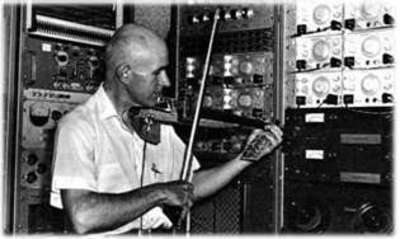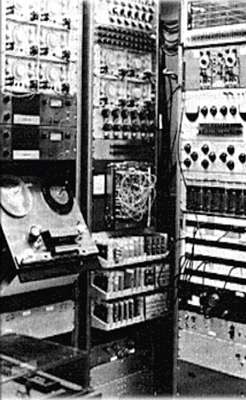Max V. Mathews is a pioneer in the world of computer music. He studied electrical engineering at the California Institute of Technology and afer that he worked on behavioral and acoustic research at Bell Laboratories (1955-1987). This laboratory carried out research in speech communication, visual communication, human memory and learning, programmed instruction, analysis of subjective opinions, physical acoustics, and industrial robotics. Later Mathews went to the Institute de Recherche et Coordination Acoustique/Musique (IRCAM) in Paris, France working as a scientific advisor (1974-1980). His major accomplishments also include the computer composition languages MUSIC (I-V) and GROOVE. At the CCRMA he developed a new pickup for electronic violins and a real-time computer system for music performance called the Conductor and a 3D MIDI Controller called the Radio Baton. In 1962 “Music by Mathematics (vinyl) was published by various artist but many were authored Max Mathews. It was produced on an IBM 7090 at Bell Laboratories.
From 15th January – 15th February the Deutsches Rechenzentrum Darmstadt presented an exhibition of Computer Art. It featured the music of Max V. Mathews.
Mathews is a member of the National Academy of Sciences, the National Academy of Engineering and is a fellow in the American Academy of Arts and Sciences, the Acoustical Society of America, the IEEE, and the Audio Engineering Society.







